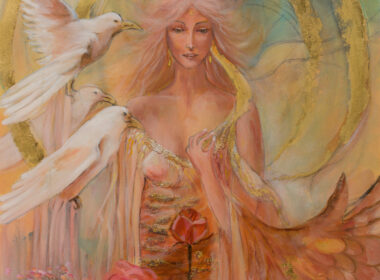
Why isn’t your art selling?- Some tips that can help


Have you ever poured your heart and soul into creating a piece of art that you thought was truly remarkable, only to find that it isn’t gaining the recognition and sales you had hoped for? It’s a familiar scenario that every artist, no matter how experienced, has faced at some point. Even the most brilliant creations sometimes need a little extra push to find their rightful spotlight. But here’s the truth: you’re not alone in this journey.
Let’s talk about that moment of realization – when you step back and wonder, ‘Why isn’t my art selling as well as I expected?’ First and foremost, take a deep breath and remember that this is all part of the process. Feeling slightly discouraged is natural, but it’s essential to keep positivity alive. After all, every artist’s path is dotted with challenges and breakthroughs, and this is just one of those hiccups. So, instead of dwelling on the ‘whys,’ let’s focus on the ‘hows’ – how can you overcome this phase and set your art on the path to recognition and success?
In the following sections, we’ll delve into five common reasons that might be holding your art back from the limelight it deserves. We’re not here to bring you down but to uplift and empower you. Each of these reasons comes with its solution – a positive and practical step you can take to steer your journey in the right direction.
So, whether you’re a seasoned artist or just starting this journey, remember that challenges are simply stepping stones toward growth. An artist’s journey is filled with twists and turns, but these experiences shape and refine your craft. With a positive mindset and a willingness to learn, you’re already on the path to transforming your art business.
Let’s begin
Limited Exposure: Is Your Art Reaching Enough Eyes?
It’s a scenario many artists encounter – your art, which you’ve poured your heart and soul into, isn’t getting the attention it deserves. But don’t let that dampen your spirits! One possible reason your art isn’t selling could be limited exposure. If your masterpiece isn’t reaching a broad audience, it’s hard for potential buyers to discover and appreciate it.
Don’t underestimate the power of online platforms in today’s digital world. They’re your allies for connecting with a broad audience. You’re missing out on a world of potential admirers if you’re not active on social media, art-focused websites, or online galleries.
Remember, it’s not enough to just share your art once. Consistency is the name of the game. If you’re not consistently putting your work out, it might get lost in the vast sea of online content. And let’s not forget the value of networking. Connecting with fellow artists and engaging with art communities can significantly broaden your reach. Attending art events also opens doors to new opportunities. Ignoring these changes means holding back your art’s potential exposure.
Fix:
Boosting your art’s exposure doesn’t require magic – just a strategic approach!
To overcome the hurdle of limited exposure, embrace the influence of social media by consistently sharing your art, engaging with followers, and employing relevant hashtags to amplify your reach. Crafting a promotion schedule across platforms will keep the momentum alive while presenting diverse facets of your art to sustain interest.
Expand your horizons through networking – participating in art-related events, workshops, and online forums can establish vital connections that unveil your art to fresh audiences. Enhance your online presence through meticulous optimization: employ detailed titles, tags, and descriptions that mirror what potential buyers might search for.
Also, having a portfolio that enhances both you and your work’s visibility can be a game-changer. At the Arts to Hearts Project, we’re here to support artists in building their portfolios, ensuring they get the recognition and exposure they truly deserve. It’s about showcasing your talent and passion to the world, and we’re here to make that journey smoother and more successful.
Not paying enough attention on the visuals
Your art reflects your style and perspective, but potential buyers might hesitate to take the plunge if it lacks a unified identity. Your portfolio might be filled with different styles, leaving people unsure of what kind of art to expect from you.
Like your website or social media, your online presence might not show a clear and steady visual identity. This can confuse potential buyers drawn to one piece but hesitate to explore more because they need clarification on your overall style.
So, consider finding that common thread that ties your art together and making it shine through your portfolio and online platforms. This way, your audience will know what to expect and feel more confident connecting with your art.
Fix:
Building a consistent brand can significantly strengthen your connection with buyers.
If you’re worried about your art not being recognized, start by thinking about what makes your art special. What themes, subjects, or styles do you use most often? This can help you make decisions about your art. When you show your art to others, it’s like telling a story. Make sure your art collection looks like it belongs together, even if you try different things.
When you update your website, social media pages, and online galleries, ensure they all look the same. This helps people remember you. Finally, let people know where you came from and what inspires your art. This can help them understand why your art is so important to you. If making a great brand feels hard, the Arts to Hearts Project can help. We know how important it is to have a brand that shows your talent and uniqueness.
Our artsist branding services highlight your strongest pieces and provide insight into your creative process, making a lasting impression on potential collectors, art critics, and patrons.
Pricing: Striking the Balance
The way you price your art can have a significant impact on whether it finds its way into collectors’ hands or not. When it comes to pricing your art, there are a few things to consider. Sometimes, if you set really low prices, people might be interested because it seems like a good deal. But be careful because this can make them think you don’t believe in your art’s value.
On the other hand, if you set prices too high, people might think your art is too expensive and not worth it. Also, if you have very different prices for similar pieces, people might get confused and not trust you. Finding the right balance is important to help people see your art’s true worth.
Fix:
Figuring out how to price your art can be a bit of a puzzle, but here are some tips to help you solve it. Start by checking out what other artists charge for similar pieces – this can give you an idea of what people are willing to pay. Then, think about how much work you put into each piece.
Remember, it’s not just about the time you spend but also the materials and skill that go into it. Keep your pricing consistent, especially for pieces similar in size, medium, and effort. And most importantly, when setting your prices, make sure you believe in the quality and value of your art – it shows confidence in what you create. While at it, why not set aside some time to boost your art business skills?
You can learn valuable pricing tips through the Arts to Hearts Project’s art biz blogs or even tune in to our podcast, adding a dash of learning to your creative process.
Not having enough connection with potential buyers
Another reason your art might not be selling as well as it could – is the absence of a compelling artist statement. When potential buyers look at your art, they’re not just interested in the visuals; they want to know the story behind it.
One key to making your art more appealing is having an artist statement that speaks to your audience. Sometimes, if your artist statement sounds too official or doesn’t show your personality, it might not connect with people.
Also, if you don’t explain what inspires you, how you make your art, and the emotions you put into it, potential buyers might not feel the connection they’re looking for. Using simple words that everyone can understand is important, so don’t worry about using fancy language. Fancy words can make people confused. If writing isn’t your strong point, read our blog on five questions your artist statement should include, or you can always turn to Arts to Hearts Project for help. We know how to make your artist statement stand out, helping you connect with people and making your art more relatable.
As we wrap up,
Every artist’s journey has unique twists and turns. Not every piece might find an immediate buyer, but that’s okay. The key is staying positive, learning from the challenges, and evolving as an artist. Remember, there’s a whole world waiting to discover and appreciate your creativity.
At the Arts to Hearts Project, we’re more than just a guiding hand – your creative companions. We’ve explored the common reasons art might not sell and offered practical solutions to help you overcome those hurdles. We’ve covered everything from understanding your audience to crafting compelling artist statements, from effective promotion to pricing strategies, and from enhancing communication to building a cohesive portfolio.
But our support doesn’t end here. We’re excited to introduce you to our Artists Inventory Management System service. We understand that managing your art business is an art in itself. Our system can assist you in tracking your sales, organizing your inventory, and keeping an eye on your progress because every artist deserves a smooth and successful journey.
So this is it for today: keep dreaming, creating, and sharing your beautiful journey with the world.

















Comments 11